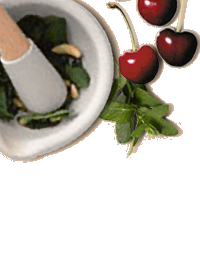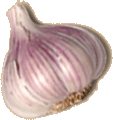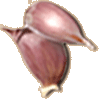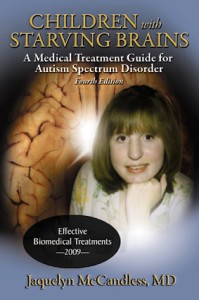Living with Autism – 3
October 27, 2012
What about the Effects of Vaccination on Susceptible Children?
The parents said it before the scientists. The mothers of autistic children I know are convinced of the link between their children’s health and behavioral changes and vaccination. See their stories included in this chapter. Another well known source of this conviction is Jaquelyn McCandless, M. D., grandmother of Chelsey, a sweet autistic child. She is the author of a clear yet poignant book based on her experiences both as a doctor and with her granddaughter, “Children with Starving Brains. A Medical Treatment Guide for Autism Spectrum Disorder”. If you haven’t already read her book, I highly recommend it for its medical and scientific approach to a very emotional subject. It will give you all the scientific explanations you need that I am not qualified to talk about.
She and other DAN! doctors believe that “Early (even in utero or neonatally) injury to the immune systems of these children by toxins or pathogens starts a series of bio-chemical events that culminate eventually in neurocognitive deficits and behavioral challenges. Though there may be a genetic vulnerability in many autism spectrum children, increasing evidence suggest that a toxic mercury-based preservative long used in vaccinations may have been the “trigger” for a susceptible subset of children, particularly since 1991 when Hepatitis B vaccinations were mandated for every newborn. I join many autism experts and parents who believe that the current epidemic of regressive autism began with that mandate. Statistics show a progressive rise in incidence beginning in 1998 when the MMR vaccination was mandated (although does not contain any mercury itself). However, the incredibly steep rise in incidence started in 1991, coinciding with the requirement for newborns to receive the HepB vaccination, often within hours of birth. We believe that early injury by toxins — likely preceded by genetic predisposition and augmented by allergies, illnesses, and repeated antibiotic use — are among the factors that can initiate a cascade of problems starting with a weakened immune system and inflamed intestinal tract. A weakened immune system opens the door to bacterial and viral infections, overuse of antibiotics, intestinal yeast overgrowth, gut inflammation, and impaired nutritional status. The frequently called “leaky gut” syndrome and its various effects enable toxins to spread throughout the body including the brain. Furthermore, in a transiently or chronically vulnerable child, immunizations with live viruses such as the MMR pose another challenge. In this complex scenario of possibilities, vaccine-associated mercury, viruses and other toxins, as well as the child’s own overactive immune components (autoimmunity) can attack neurons and thereby interfere with synaptic development and nerve signaling. With much variation from child to child, these factors can combine to create brain malnutrition and the cognitive impairment characteristic of ASD children.”
There you have it. In this increasingly polluted world, what a mother has been exposed to can be transmitted to her child through her umbilical cord and make that child sensitive to the additional chemical aggression of early childhood vaccination. As I mentioned earlier, whether a child is breastfed or not, his/her immune system is not fully developed for another few months. If it has been affected by a possible transmission of toxins from the mother, this baby’s immune system is not strong enough to accept and fight off the live viruses given in early vaccination. It is now widely believed that ethylmercury (in the form of thimerosal) – which was used as a preservative until 2001 in multiple doses of vaccines mandated for newborns – is the cause of the drastic changes seen in susceptible children between their before and after vaccination days. Please be aware that thimerosal is still used today in some vaccines, especially the flu vaccine. Although the flu vaccine is not mandated, it is still strongly recommended by most pediatricians. You can find more information regarding this issue at www.cdc.gov as well as the National Vaccine Information Center website at www.nvic.org.
Another potential source of mercury from thimerosal is a fairly common pharmaceutical prenatal drug called RhoGAM (or other brand names). It is given to mothers with Rh-negative blood to prevent hemolytic disease of their newborn. Not all of them contain thimerosal, but enough do to be cautious. If you are Rh-negative, please ask your doctor to make sure that the drug they prescribe does not contain thimerosal. Some baby eye and ear drops may also contain thimerosal as a preservative.
On his birth day an infant with an immature immune system and liver is subjected to a mercury-containing Hepatitis B vaccine. As of today, this child will be given as many as 21 immunizations in the first 15 months of his/her life. Think about this a little bit. Does it make any sense? While there has not been a definitive link established between HepB vaccination and autism, empirical evidence supports this conclusion. Please do not misunderstand; every parent must make his or her own decision. I am not saying “do not vaccinate your child”, I’m saying “listen to other parents, do your own research and make your choices regarding when to vaccinate based on the evidence, not just because the government says so”. I highly recommend Dr. McCandless’ book as a very well researched expose on the subject.
It is highly possible that these combinations of multiple factors lead to ASD. Some scientists will refute that assertion, but plenty of parents and supportive doctors already have noticed these changes in the health and behavior of their children. As far as I’m concerned my money is on the parents living this situation day in, day out.
More to come… part 4.
Chef Braux’s Recipe
Gâteau a la Noix de Coco and aux Canneberges.
Coconut Cranberry Walnut Bread
Yield: One (9x5x5”) loaf
Oven Temp: 350F
This recipe is GFCF
INGREDIENTS
– 1 lb Eggs (about 8)
– 4 oz Coconut oil, melted
– 4 oz Coconut or Soy or Almond milk
– 4 oz Turbinado sugar
– 1 tsp Vanilla extract
– ½ tsp Sea salt
– 3 oz Coconut flour
– 1 tsp Baking powder
– 4 oz Dried cranberries
– 2 oz Walnut pieces
PROCEDURE
1. Preheat oven at 350F.
2. In a large measuring cup, weigh and blend together eggs, oil, coconut milk, sugar, vanilla and salt.
3. In your mixer’s bowl, weigh and combine coconut flour with baking powder.
4. Start your mixer at low speed with the whisk attachment. Mix liquids into dry ingredients to form a soft batter. Increased the speed to medium and whip until there are no lumps.
5. Fold in cranberries and nuts with a rubber spatula.
6. Grease your loaf pan with coconut butter or line with aluminum foil. Pour the batter into the loaf pan.
7. Bake at 350F for about 50-60 minutes until a small knife’s blade comes out clean. Remove from pan and cool on rack.
Chef Alain Braux
From: Living Gluten and Dairy-Free on Amazon.com
Disclaimer: This article has been written as an educational tool only. It is not a substitute for the informed medical recommendations of your personal physician or other qualified healthcare provider.








leave a comment